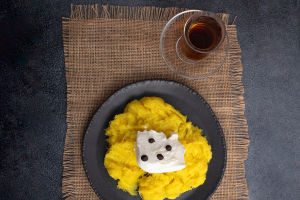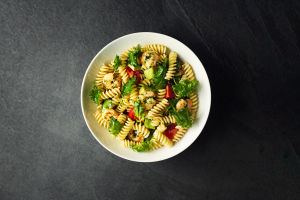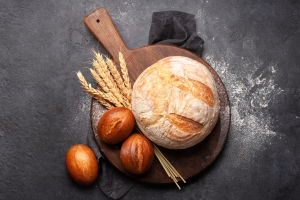Dear Lykkers! Few beverages boast the global popularity, cultural significance, and rich history that tea does.
But how did this simple drink evolve into such an integral part of different cultures? Let’s explore the world of tea, from its origins to its many varieties and rituals.
The Origins of Tea: A Serendipitous Discovery
Legend has it that tea was discovered in 2737 BC by Chinese Emperor Shen Nong. According to the tale, the emperor was sitting beneath a tree while his servant boiled water when a few leaves from the tree blew into the pan. Intrigued by the aroma, the emperor tasted the infusion, and thus tea was born.
While the truth of this story remains debatable, there’s no doubt that tea’s roots are firmly planted in China, where it was first cultivated and consumed as a medicinal beverage. It spread to Japan in the 8th century, and by the 17th century, tea had made its way to Europe, where it became a fashionable drink among the elite.
Types of Tea: A World of Flavors
Despite the vast variety of teas available today, they all come from the same plant: Camellia sinensis. The differences in flavor, color, and aroma come down to how the leaves are processed. Here are the primary types of tea:
1. Green Tea
Green tea is made from unoxidized leaves and is one of the least processed types, which allows it to retain a higher amount of antioxidants and nutrients. Known for its light, grassy flavor, green tea is often celebrated for its health benefits, including improved brain function and fat loss.
2. Black Tea
Black tea is fully oxidized, giving it a bold, robust flavor and a dark color. It contains more caffeine than green tea and is a popular morning beverage in many parts of the world. Black tea is often the base for blends like Earl Grey and chai.
3. Oolong Tea
Oolong tea falls between green and black tea in terms of oxidation. It has a complex flavor profile, often described as floral or fruity. Oolong tea is a favorite in China and Taiwan, where it’s often served during traditional tea ceremonies.
4. White Tea
White tea is the least processed of all teas, made from young tea leaves and buds. It has a delicate, subtle flavor and is low in caffeine. White tea is revered for its high antioxidant content and its light, refreshing taste.
5. Herbal Tea
Technically not a "tea," herbal teas (also known as tisanes) are made from an infusion of herbs, flowers, spices, or fruit. Popular herbal teas include chamomile, peppermint, and hibiscus. These caffeine-free brews are often used for their calming and medicinal properties.
The Ritual of Tea: A Global Tradition
Tea is more than just a beverage—it’s a ritual. Across the globe, different cultures have developed unique tea-drinking traditions, each with its own set of customs and etiquette.
1. Chinese Tea Ceremony
Known as "gongfu cha," the Chinese tea ceremony emphasizes the skill and precision required to brew the perfect cup of tea. Small clay teapots are used to steep oolong or green tea leaves, and the ceremony is a quiet, meditative experience.
2. Japanese Tea Ceremony
The Japanese tea ceremony, or "chanoyu," is a highly stylized ritual that focuses on the preparation and serving of matcha (powdered green tea). It’s steeped in Zen Buddhist philosophy and is meant to promote mindfulness and harmony.
3. British Afternoon Tea
Perhaps the most well-known tea ritual in the Western world, British afternoon tea involves enjoying a pan of black tea alongside finger sandwiches, scones, and sweets. This tradition, which began in the 19th century, is a social event often associated with elegance and refinement.
4. Moroccan Mint Tea
In Morocco, tea is a symbol of hospitality. The most popular type is green tea brewed with fresh mint and plenty of sugar. It’s poured from a height into small glasses to create a frothy top, and it’s often served three times, each with a slightly different flavor.
How to Brew the Perfect Cup of Tea
Brewing tea is both an art and a science. Here are some tips for getting the best flavor from your tea:
1. Water Temperature
Different teas require different water temperatures. Green and white teas are best brewed with water between 160°F and 180°F, while black and oolong teas can handle higher temperatures, around 200°F.
2. Steeping Time
Oversteeping can make tea bitter. Green and white teas only need 2-3 minutes, while black tea should steep for 3-5 minutes. Herbal teas can steep longer, usually around 5-7 minutes.
3. Quality of Tea Leaves
For the best flavor, use loose-leaf tea rather than tea bags. Loose leaves allow for better water circulation, resulting in a more full-bodied brew.
A Beginner's Guide to Tea
Video by Mattias Pilhede
Whether you’re drawn to tea for its rich history, diverse flavors, or health benefits, one thing is clear: tea is more than just a beverage. It’s a tradition, a ritual, and a source of comfort for people around the world. From the bustling streets of London to the quiet tea gardens of Japan, tea continues to bring people together, one cup at a time.


